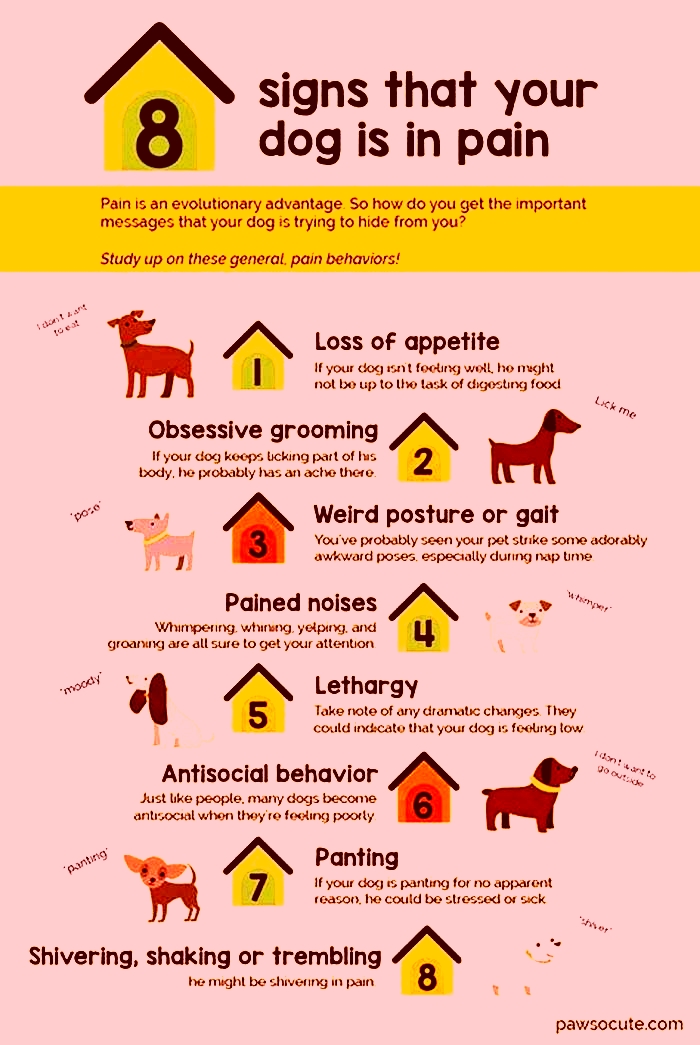Is Your Beagle Overweight Signs and Solutions

How To Tell If Your Beagle Is Overweight: Recommended Weight
Beagles are known to make excellent family companions. They have affectionate personalities but are also independent and are recognized by their compact size and sturdy build.
If beagles are not provided with adequate care, they are susceptible to weight gain just like many other breeds.
As a breed, beagles are known for their keen appetite and often seem to be constantly hungry and in search of food.
Unlike many other dogs, beagles tend to lack the ability to regulate their food intake and will often continue to eat to the point at which they gorge themselves.
If their diet is not monitored, there is a risk of beagles experiencing weight issues and possible health problems related to this.
If you are concerned by your beagles eating habits, you may have fears that they are potentially overweight.
There are several ways of checking whether this is the case. We have identified these in our guide below, along with the expected weight of a healthy beagle.
Their Appearance
One of the most dependable ways of telling whether a beagle is overweight is to assess its appearance. The ribs of a healthy beagle should not be visible because this can be a sign that they are too skinny. However, they should still be easy to feel.
Naturally, their ribs have a thin layer of fat protecting them, but this shouldnt make them more challenging to feel.
You should also assess their spine, shoulders and hips. Similarly to their ribs, none should be visible because this can indicate that they are not carrying enough weight.
Though they are covered by a thin layer of fat, you should still be able to feel them without difficulty. A beagle of a healthy weight should also have a noticeable midsection/ waistline.
This region of their body should be more slender than their chest. Also, feel their tail. The base should be smooth to the touch with a thin layer of fat.
Lack of Shape and Definition
Beagles are known for their athletic build. Those that are overweight will lack definition and an athletic appearance.
Healthy beagles are rather muscular, so if yours is a little chunky and you are no longer able to pinpoint the exact position of their ribcage, then it is time to put them on a nutritional diet plan that will help them to lose some of this weight.
They Tire Easily
A beagle that is overweight is likely to tire very easily.
If you have noticed that they struggle to take more than a couple of steps before stopping and beginning to pant, this is a sign that they are overweight.
Of course, in warmer weather, panting and tiredness is expected behavior, but this shouldnt be a regular occurrence.
If it does seem to be happening more frequently than you would expect, you should consult the vet, as they will be able to implement an exercise regime to help them.
Online Veterinary 24/7
Chat With A Veterinarian OnlineConnect with a verified veterinarian in minutes. No waiting for appointments or office hours. No high fees. Your pet's health made convenient and worry-free.
They Cant Groom Themselves
If you notice that your beagle is unable to scratch themselves, this is a telling sign that they are overweight. Although we often take it upon ourselves to groom our dogs, they will also do it independently daily.
However, a dog that is overweight will experience much more difficulty when attempting to scratch or bite themselves and this is often due to a loss of flexibility.
Ultimately, an overweight beagle will find it virtually impossible to groom themselves.
How much should a beagle weigh?
A healthy male beagle should weigh between 22 to 24 pounds whilst a healthy female beagle should weigh between 19.8 to 22 pounds.
Not only will the gender of your beagle impact their weight, but their height will also be influential. A beagles height is identified by the two following categories; those that are up to 13 tall and those that are up to 15 tall.
You should expect a tall beagle to weigh more. For example, a beagle of a healthy weight that grows up to 13 should weigh anything from 22 to 30 pounds.
However, a beagle that grows taller than this and reaches the 15 height range will likely weigh as little as 25 pounds and a maximum of 35 pounds.
Beagles that were the runt of the litter may not reach the same height and weight as their siblings, and their smallness is going to be reflected in their weight.
Although it may seem challenging to maintain the weight of your beagle, it is of paramount importance.
As mentioned, beagles will continue to eat even when they have surpassed the feeling of fullness, so they depend on you to ensure that they are exercised and fed the correct amount of food.
What should a 3-month-old beagle weigh?
A healthy 3-month-old beagle puppy should weigh between 9.5 and 10.4 pounds. As they double in age and reach the 6-month mark, their weight should also be almost double this too.
Those with a more diminutive stature are likely to weigh around 17.2 pounds. However, those that have a slightly larger build should weigh around 18.7 pounds.
Are beagles more likely to gain weight?
The majority of breeds are pretty good at self-regulating how much food they consume.
Typically, they will stop eating once they have developed a feeling of fullness or once they have eaten enough food to provide them with enough energy for the days activities.
Beagles on the other hand, do not share this capability and are often known to overeat. Recognized as opportunists, they will often try to eat anything that they can get their paws on, and as a result, there is an increased risk of them overindulging.
A beagle that is rather inactive is more likely to gain weight too.
For example, beagles that are of a senior age dont tend to run and play as much as they once did, and those with stubborn personalities may also be more reluctant to engage in physical activity, which places them in a more vulnerable position when it comes to weight gain.
As their owner, you are responsible for regulating your beagles daily food intake.
Because of this, you should ensure that they arent overfed but are instead fed 2 to 3 times a day.
Also, although their begging may be difficult to resist, you should be careful with the portion sizes, ensuring that you give them healthy food at each meal time.
Are overweight beagles unhealthy?
An overweight beagle has a greater risk of developing health issues during the later stages of their life, some of which can be rather severe.
Sometimes, a beagle may develop arthritis, diabetes, or heart problems. They are also more susceptible to breathing problems as the added weight puts more pressure on their bodies. Furthermore, weight gain can also shorten your dogs lifespan.
In some cases, an illness of some kind may be responsible for your dogs weight gain.
A common symptom of cushings disease in dogs is weight gain. Due to an increase in cortisol production, they are more likely to bloat too, which can result in your dog appearing larger than normal.
Dogs suffering from Addisons disease typically experience the opposite symptoms. Vomiting combined with a loss of appetite can cause them to lose weight rather than put it on.
If your dogs weight seems different from usual and their eating habits have also changed too, it may be worth consulting the vet to identify whether a disease of some kind is responsible for this sudden change.
How can you help your beagle lose weight?
Helping your beagle lose weight requires a lot of effort on your behalf. Although it may seem like a difficult, time-consuming task, it is a crucial part of returning your dog to a healthier and fitter state.
Not only will you feel much happier as their owner, but they will also feel this happiness.
Before implementing any weight loss techniques you should speak to a vet. They will be able to inform you of the best practices that are suitable for your dog.
Aside from this, they can tell you the exact weight your dog should be at and assess your beagle to ensure that they arent suffering from any underlying health problems causing them to gain weight excessively.
Reduce the amount of treats that you feed them
Treats are a great way of rewarding your dog for good behaviour. Often you give them one and before you know it, you are almost halfway through the packet.
Although it is easy to overlook the number of treats that you give your dog, as many assume that they do not have a harmful impact because they arent a substantial meal, they can actually cause weight gain.
To begin, you should avoid cutting them out completely, but instead reduce the amount that you would typically feed them.
Remember to account for the treats they are given in their daily calorie intake. Ideally, you should transition to treats that have a low fat and calorie content as they provide a healthier alternative for your dog.
Although you dont necessarily need to cut treats out of their diet completely, it is important to ensure that you are sensible with the quantity and size of the treats that you feed to them.
If you are still giving your dog a substantially sized treat less frequently throughout the day, they are still at risk of becoming overweight.
Implement a nutritional plan
Your dog needs access to the correct nutrients to provide them with energy and keep them healthy. If you are not confident in putting together a nutrition/diet plan that is suitable for your dog, a vet will be able to.
Once you know the weight your dog needs to lose, you will then need to feed them according to this plan and remember to adopt a routine rather than feeding your dog when they appear hungry.
Feed them the correct portions
It is likely that many dog owners are guilty of putting food into their pets bowl and putting it on the floor for them to eat without paying much attention to the measurements.
Feeding them the correct portions for their age and size will ensure that they are not overfed but are getting the exact amount of food they need.
Reductions in portions should be done gradually rather than all at once. You must also ensure they are still getting the calories needed to lose weight.
Begin by reducing their meal size by a small amount, until noticeable signs of weight loss. If your dog continues to lose weight, you can then continue to cut down their portions until they are eating the right amount for their weight.
Establish an exercise regime
When helping your beagle to lose weight, you should dive in and start taking them on lengthy and intense walks. You should instead begin slowly and exercise them to their capabilities as this ensures that there isnt too much pressure on their bodies.
Eventually, as they begin to lose weight you can increase the longevity and intensity of their walks.
Final Thoughts
As you can see, there are many ways of identifying an overweight beagle. The most apparent signs can be seen through their visual appearance.
While beagles are more susceptible to weight gain in comparison to many other dog breeds, they are ways of resolving this issue so that it doesnt become overly problematic and affect their health.
You must ensure that they are fed correctly and exercised properly so that they maintain a healthy weight for their age and size.
If your beagle is overweight, there are many steps that you can follow to rectify this issue, and, likely, you will soon see them return to the right weight.
21 Beagle Health Problems (from Experienced Owners)
When it comes to choosing a dog, beagles are a popular breed due to their affectionate, playful, and curious nature. As a beagle owner, youll likely find yourself constantly entertained by your pups mischievous antics and goofy behavior. However, beagles can also be prone to certain health problems, some of which come directly from their breed-specific characteristics.
In this article, youll learn about the most common (and not-so-common) health issues in beagles, including the causes, symptoms, and treatments.
Whether youre a seasoned beagle owner or considering adding one of these pups to your family, this information will show you how to help keep your little hound happy and healthy for years to come.

Beagle Health Problems
If youre the proud owner of a beagle (or thinking about getting one), its important to know that these active and inquisitive pups can come with a unique set of health problems.
While regular check-ups with your vet are essential for any pet, there are particular health issues specific to beagles that could cause potential problems down the road if not addressed correctly and in a timely manner.
To help gain a better understanding of these, weve compiled this list of 21 beagle health problems based on many years of our own and other beagle owners experiences.
Read on to find out more about each one.
1. Ear Infections

In the number one spot, the most common beagle health issue begins with their ears.
Beagles can develop several problems with their ears due to their anatomy and lifestyle. Their long, floppy ears can trap moisture, dirt, and bacteria, leading to the development of infections and other ear problems.
However, the biggest factor that contributes to the high incidence of ear issues in beagles is their tendency to drag them along the ground while they explore and play, especially when they find something particularly disgusting, like dead earthworms!
This type of playful behavior can increase the amount of dirt, debris, and bacteria that is trapped in the ears, leading to a higher risk of infections and other ear-related problems.

Causes
- Foreign objects in the ear canal
- Excessive ear wax
- Moisture trapped in the ear
- Allergies
- Bacterial or fungal infections
- Hormonal imbalances
- Immune system deficiencies
Symptoms
- Itching and scratching of the ear
- Redness and swelling
- Odor coming from the ear
- Discharge from the ear (may look like coffee grounds)
- Tilting or shaking of the head
- Loss of balance
- Pain or discomfort when touching the ear
Treatments
- Cleaning the ear with a solution recommended by a veterinarian
- Antibiotic ointments or drops
- Anti-inflammatory medication
- Allergy testing and treatment
- Surgery to remove foreign objects or treat structural issues
Early treatment can help prevent more serious and painful conditions from developing. Additionally, regular ear checks and cleaning weekly with an appropriate solution can help prevent future ear infections in your beagle.
2. Digestive Problems

Beagles are predisposed to digestive problems for several reasons. One is due to their inquisitive yet highly food-orientated nature to eat indigestible objects such as stuffed toys, garbage, and other foreign objects they find interesting.
Additionally, their strong scavenging instincts can lead to coprophagia (eating of feces), which can introduce harmful bacteria into the digestive system and cause digestive issues.
Factors like stress and anxiety, or premature diet changes can also exacerbate digestive problems in beagles. If your beagle potentially has a blockage in their stomach or intestine, surgery may be necessary in order to remove the blockage and prevent further complications. Its a very good reason to ensure you have adequate pet insurance for your beagle.

Causes
- Overeating
- Eating inappropriate items (e.g. toxic plants, garbage, poop)
- Food intolerance or allergies
- Inflammatory bowel disease (IBD)
- Parasites (e.g. worms)
- Bacterial or viral infections
- Stress or anxiety
Symptoms
- Vomiting
- Diarrhea
- Loss of appetite
- Abdominal pain or discomfort
- Bloating
- Weight loss
- Constipation
- Bad breath
- Lethargy
Treatments
- Dietary changes (e.g. switching to a hypoallergenic diet)
- Antibiotics or antiparasitics, if infection is present
- Anti-inflammatory medications (e.g. steroids)
- Probiotics to restore healthy gut bacteria
- Pain management for abdominal discomfort
- Stress reduction
- Surgery to remove the blockage
It is important to consult a veterinarian for an accurate diagnosis and proper treatment plan for your beagles digestive problems. In some cases, underlying health conditions may be causing digestive issues, so a comprehensive evaluation is necessary.
Beagle-proofing your home can also go a long way in preventing them from having access to forbidden items.
3. Obesity

One of the most prevalent beagle health issues is obesity, due to their love of food and their ability (with high success rates) to beg for treats, which ultimately leads to overeating and weight gain.
Inactivity and lack of exercise, coupled with a diet that is high in calories and low in nutrients can contribute to the development of obesity in beagles.
This is particularly true for beagles who live primarily indoor lifestyles, as they may not have the opportunity to engage in as much physical activity as they would otherwise.
Obesity in beagles can also be caused by underlying medical conditions, like hypothyroidism.
Causes
- Overfeeding
- Lack of exercise
- Genetics
- Underlying health conditions
- Medications
Symptoms
- Increased body weight
- Reduced energy levels
- Difficulty breathing
- Excessive panting
- Joint pain
- Skin irritation
Treatments
- Controlled diet
- Regular exercise
- Weight loss supplements
- Medical intervention for underlying health conditions
- Behavioral modification techniques
It is important to note that the treatment for obesity in beagles should be tailored to the individual pup and needs to be discussed with a veterinarian to ensure the best approach for the specific case.
In general, a combination of a controlled diet, regular exercise, and behavior modification techniques is the most effective way to address obesity in beagles and improve their overall health.
4. Diabetes

Beagles are susceptible to many of the health problems that plague other purebred dogs, including diabetes. To put your beagles health first, it is important to be aware of the causes and symptoms of diabetes, as well as potential treatments.
Common causes include obesity, genetics, and a diet high in fat or carbohydrates. Notable symptoms include excessive thirst and urination, sudden weight loss or gain, fatigue, and a reduced appetite.
Depending on the case, treatments may involve diet changes or insulin therapy.
Causes
- Genetics
- Obesity
- Poor diet
- Pancreatic disorders
- Hormonal imbalances
Symptoms
- Excessive thirst and urination
- Increased hunger
- Weight loss
- Fatigue and weakness
- Bladder Infections
Treatments
- Medications to regulate insulin levels
- Diet changes (low carbohydrate and high protein)
- Regular exercise
- Monitoring of blood sugar levels
- Regular vet visits for monitoring and adjustments to treatment plan
If you suspect that your beagle has diabetes, it is important to consult with a veterinarian for a proper diagnosis and to discuss treatment options, which may include insulin therapy, dietary changes, and lifestyle modifications.
While diabetes can be life-threatening if left untreated, beagles can (and do) live healthy lives with proper care.
5. Separation Anxiety

Separation anxiety is a fairly common beagle health problem, where the pooch experiences extreme distress when separated from its family or caregiver for a period of time.
Symptoms of beagle separation anxiety can include panting and pacing, barking, howling, chewing, digging, and house soiling. These issues can be exacerbated when beagles are left alone too often or at unusual times such as overnight.
While it can be difficult to identify exactly how pervasive separation anxiety is in beagles due to the unpredictable nature of the condition, it is fair to say that many beagles suffer from this issue either chronically or occasionally.
Causes
- Lack of socialization and interaction
- Poor training and management
- Changes in routine or environment
- Abandonment or rehoming experiences
- Genetic predisposition
Symptoms
- Barking, howling, and whining when left alone
- Chewing, digging, scratching on doors and windows
- Elimination indoors (urination and defecation)
- Loss of appetite and destructive behavior
- Panting, shaking, and excessive salivation when owner prepares to leave
Treatments
- Behavior modification training
- Counter-conditioning and desensitization techniques
- Providing physical and mental stimulation before departure
- Gradual acclimation to being alone through short absences and training exercises
- Medications (such as anti-anxiety drugs and pheromones)
Depending on the severity and frequency of symptoms, it is advisable to seek veterinary advice or behavior training before trying other methods which may be ineffective in restoring balance in an anxious beagles daily routine.
Learn more about the signs and symptoms of Beagle Separation Anxiety
6. Ticks

Beagles can get ticks by roaming in areas where they are commonly found, such as tall grasses, woods, and fields. Ticks can attach themselves to a beagles skin and feed on its blood for several days, which is how they are able to spread Lyme disease.
Beagles are more prone to getting ticks because of their inquisitive and active nature, as well as their thick fur, which provides a suitable hiding place for ticks.
Additionally, beagles have a strong tendency to sniff around and explore their surroundings, which can bring them into close contact with areas where ticks are commonly found.
Causes
- Spending time in areas with tall grass or dense vegetation
- Exposure to wooded areas
- Contact with infected animals
Symptoms
- Swelling and redness at the tick bite site
- Loss of appetite
- Fatigue and lethargy
- Fever
- Lameness or joint pain
Treatments
- Removing the tick promptly with a Tick Remover
- Cleaning the bite wound
- Administering tick-borne disease prevention medication as prescribed by a veterinarian
- Monitoring for symptoms and seeking veterinary treatment if necessary
- Keeping lawns and outdoor areas free of tall grass and excessive vegetation
It is important that beagle owners check their dogs daily for any signs of a tick infestation and groom them as frequently as possible to ensure they are tick-free.
7. Anal Gland Issues

Anal gland issues are fairly prevalent in the beagle breed, thanks to their curiosity to eat anything and everything, especially when coupled with a lack of exercise and poor diet.
For example, if your beagle is consuming feces frequently, it can reduce the amount of fiber in its diet, leading to softer stools that can cause increased pressure on the anal glands and make it harder for them to empty properly.
This breed is also prone to obesity and loss of muscle mass, which can further contribute to anal gland problems.
Having experienced an anal gland abscess and rupture in one of our beagles, well say it can be one of the most highly distressing beagle health issues for both the doggy and the owner!

Causes
- Obesity
- Soft stools
- Digestive problems
- Lack of exercise
- Food allergies
- Anal sac tumors
- Anal sac stones
Symptoms
- Scooting
- Licking or biting at the anal area
- Pain or discomfort when defecating
- Lump, swelling or redness near the anus
- Strong, foul odor from the anus
- Constipation or diarrhea
Treatments
- Antibiotics to treat infection
- Anti-inflammatory medications to reduce swelling
- Pain relief medication
- Dietary changes to firm up stools
- Surgery to remove tumors or abscessed glands
- Regular expression of the glands by a veterinarian or trained person to prevent future issues
Its important to note that anal gland issues can be painful and uncomfortable for dogs, so its important to seek veterinary care if you suspect your beagle is experiencing any of these symptoms. Treatment options will vary based on the cause and severity of the issue.
8. Bloat (Gastric Torsion)

Bloat (Gastric Torsion) is a life-threatening health condition that occurs when the stomach fills with gas, fluid, or food and then rotates, trapping the contents inside and cutting off blood flow.
Beagles are a breed that are particularly susceptible to bloat due to their deep chest and anatomy, which increases their risk of twisting.
Additionally, their tendency to eat quickly and gulp air can also contribute to the development of bloat.
Causes
- Overeating or eating too fast
- Exercise immediately after eating
- Eating one large meal a day
- Drinking large amounts of water quickly
- Genetic predisposition
- Stress
Symptoms
- Distended or bloated abdomen
- Restlessness or pacing
- Whining or whimpering
- Salivating excessively or drooling
- Rapid breathing or panting
- Retching or attempting to vomit without producing anything
- Lying down and not getting up
- Shock
Treatments
- Emergency surgery to untwist the stomach and remove any gas, fluid, or food that may have accumulated
- IV fluids and electrolytes to stabilize the dog
- Antibiotics to prevent infection
- Anti-inflammatory drugs to reduce swelling
- Probiotics to aid digestion and reduce the risk of future bloat
- Feeding smaller, more frequent meals instead of one large meal
It is crucial to seek veterinary treatment immediately if bloat is suspected, as it can quickly progress to a life-threatening situation.
Preventative measures such as feeding smaller, more frequent meals and avoiding immediate exercise can also help reduce the risk of this condition in beagles.
9. Reverse Sneezing

Reverse sneezing is a common respiratory condition, characterized by sudden, forceful inhalations through the nose that can sound like snorting or choking.
During a reverse sneeze, the beagles soft palate and throat will temporarily collapse, causing them to pull air rapidly into the nose.
Additionally, beagles have extremely sensitive respiratory systems, which can be triggered by things like strong odors, dust, or excitement, causing an episode of reverse sneezing.
Often, the case is normally down to your beagle having sniffed some debris or grass seeds up through their nose whilst out on a walk or playing in the yard.
Causes
- Inhaling irritants, such as dust or strong odors
- Allergies
- Excitement or physical activity
- Foreign objects in the nasal passage
- Respiratory infections
Symptoms
- Honking or snorting sounds
- Gagging or choking
- Rapid breathing
- Panting
- Visible distress
Treatment
- Remain calm and provide comfort to your beagle
- Remove irritants from the environment, if possible
- Provide humidity, such as a warm mist from a humidifier
- Consult a veterinarian for underlying health issues, such as allergies or infections
Note: Reverse sneezing is generally not a serious beagle health issue, and will resolve on its own within a few minutes. However, if your beagle experiences frequent or prolonged episodes of reverse sneezing, it is recommended to consult with a veterinarian to rule out any underlying health issues.
10. Allergies

Allergies in beagles can be caused by a range of factors, from environmental triggers like dust, pollen, and molds, to food sensitivities from grains, dairy, and additives. Thankfully, there are treatments available that can alleviate a beagles allergy symptoms and get them back to feeling their best.
Depending on the cause of the allergy, these may include basic steps like removing irritants or potential allergens from their environment or diet, medication to reduce inflammation, specific shampoos for sensitive skin, allergen avoidance, or desensitization therapy
Having a good understanding of the possible causes and symptom signs associated with beagle allergies is important for providing them with the best care possible.
Causes
- Environmental allergens such as pollen, dust mites, and mold.
- Food allergens such as proteins in beef, chicken, and dairy.
- Certain medications
Symptoms
- Itchy skin
- Bald patches or tufts falling out
- Smelly coat
- Scratching and chewing
- Hot spots
- Runny nose and eyes
- Vomiting and diarrhea
Treatments
- Avoidance of allergens
- Antihistamines
- Corticosteroids
- Fatty acid supplements
- Allergen-specific immunotherapy (allergy shots)
Treatment options may involve a combination of changes in diet, avoidance of contact with possible allergens, medications prescribed by a veterinarian, nutritional supplements, and desensitization therapies.
11. Skin Conditions

As common beagle health problems go, skin conditions rank amongst the top.
Causes of skin disorders can range from fleas and ticks to underlying illnesses and irritants in the environment. The symptoms are vast and varied, ranging from bald patches and inflammation to excessive itching that can lead to infection if left untreated.
Fortunately, most common skin conditions in beagles can be managed through medications like anti-inflammatories or antibiotics, paired with lifestyle modifications like frequent brushing or bathing with hypoallergenic shampoos
Causes
- Flea and tick infestations
- Bacterial infections
- Fungal infections
- Hormonal imbalances
- Immune system disorders
- Environmental factors
Symptoms
- Itching
- Scratching
- Hair loss
- Excess Shedding
- Rashes or bumps
- Odor
- Redness or swelling
- Discharge or crusting
Treatments
- Anti-inflammatory medications
- Antibiotics
- Medicated shampoos
- Steroids
- Immune system boosters
- Allergy testing and immunotherapy
- Environmental control and management
Its important to note that the specific treatment for a skin condition in a beagle will depend on the cause of the condition, and can take several months to find the root cause. A proper diagnosis by a veterinarian is necessary to determine the best course of action.
12. Beagle Dwarfism
Beagle dwarfism is a genetic condition that affects the growth of beagles, causing them to be smaller than the average size for their breed.
Beagles affected by dwarfism can display differences in head size, body length, forelegs that are shorter than their hind legs, and toes that curl inward toward the beagles center of gravity.
This condition is caused by a mutation in the gene responsible for regulating bone growth, leading to stunted growth and smaller overall size.
Beagles are predisposed to this condition as it is an inherited trait, passed down from parent to offspring. Breeding carriers of the gene can result in offspring that also have the condition.
Symptoms include pain or discomfort from abnormal skeletal development and balancing difficulties due to bowing legs.
Causes
- Inheritance from parent dogs with the dwarfism gene
- Inbreeding or linebreeding
Symptoms
- Smaller than average size
- Short legs and body
- Wide head
- Protruding jaw
- Distinctive facial appearance
- Spinal abnormalities
Treatments
- There is no cure for beagle dwarfism, but affected dogs can live a healthy life with proper care and management.
- Treatment focuses on managing any secondary health problems that may arise as a result of the condition.
- Surgery may be recommended for spinal abnormalities.
- Regular veterinary check-ups are important to monitor the health of the dog.
Treatment for beagle dwarfism is primarily focused on creating a comfortable living environment and providing physical therapy to help retain mobility and balance. With proper care and attention beagles with this condition lead an otherwise healthy life span.
13. Hip Dysplasia

Hip Dysplasia is a health problem that is especially common in beagles, yet can be quite debilitating if left untreated.
The condition, which is often caused by overactivity or excess weight on the beagles hind legs, results in damaged and wavering joints. As a result, beagles with hip dysplasia may suffer from reduced mobility, pain when leaping or climbing stairs, and shallower sleeping habits.
Other symptoms may include limping, an unusual gait when walking, and reluctance to exercise.
Causes
- Genetics
- Overweight
- Lack of exercise
- Rapid growth
Symptoms
- Limping
- Decreased activity
- Pain or discomfort
- Difficulty standing or jumping
Treatments
- Weight management
- Exercise modification
- Pain management (e.g. medication)
- Surgery (e.g. total hip replacement)
- Physical therapy and rehabilitation
If you suspect that your beagle has hip dysplasia, it is recommended to consult with a veterinarian for a proper diagnosis and to discuss treatment options, such as weight management, physical therapy, or surgery.
14. Dental Problems

When it comes to common beagle health problems, dental issues are fairly high on the list. One of the reasons for this is that beagles are classed as aggressive chewers, meaning their teeth can become worn down over time, or fractured/broken on tough bones or chew toys, whereas most other breeds would simply give up.
Signs of dental issues in beagles include bad breath, inflamed gums, new growths, and drooling. These can all lead to serious problems if left untreated, such as receding gums, tooth loss, and infections that can spread throughout the body.
Skin irritation around the muzzle may also occur due to excessive licking or scratching of the affected area.
Causes
- Poor oral hygiene
- Dental disease
- Aggressive chewing
- Trauma
- Old age
- Certain medical conditions
Symptoms
- Bad breath
- Broken, loose or missing teeth
- Yellow or brown tartar buildup
- Pain or swelling in the mouth
- Drooling excessively
- Refusing to eat or playing with food
- Changes in chewing or biting habits
Treatments
- Supervising when chewing on tough bones/toys
- Regular dental cleanings and check-ups
- Proper dental hygiene (brushing, dental chews, etc.)
- Antibiotics or other medications (for infections)
- Tooth extractions (for severe or advanced dental disease)
- Dental surgery (for trauma or advanced dental disease)
- Pain management and treatment for underlying medical conditions
To protect against these problems in your beagle it is important to have them undergo yearly check-ups where their teeth can be properly examined and cleaned if necessary.
For more serious cases or infected areas of the gums surgery may be needed to repair the damage done.
15. Lumps

Lumps in beagles, also known as skin tumors or nodules, are common health problems in the breed.
These lumps can form anywhere on a beagles body (most commonly the chest, the armpits, around leg joints, and toes), ranging in size and consistency depending on the type of tumor.
Most causes of lumps include hormonal imbalances, developmental issues, and infections, however, certain types may also result from exposure to harsh chemicals or elements in the environment such as radiation or excessive heat/cold.
Symptoms such as hair loss and other skin lesions surrounding growths tend to show up first before visible signs of lumps.
Lumps are particularly common in older beagles, because as they age, their bodies are more likely to produce and accumulate abnormal growths, including fatty tumors and lipomas.

Causes
- Infections
- Inflammatory conditions
- Abscesses
- Fatty tissue growths
- Cysts
- Vaccine reactions
- Cancer (e.g. mast cell tumors, lipomas, etc.)
Symptoms
- Visible lump or bump on the skin
- Hair loss around the area
- Swelling or redness around the lump
- Licking or scratching at the lump
- Drainage or discharge from the lump
- Pain or discomfort when the lump is touched
Treatments
- Antibiotics (for abscesses)
- Cryotherapy (freezing the lump)
- Surgical removal
- Radiation therapy
- Chemotherapy
Fortunately, most common cases of growths and lumps in beagles are benign and easily treatable with minimal stress to your pup.
It is important to note that treatment options vary based on the type, size, and location of the lump, as well as the overall health of your dog. Your veterinarian will be able to provide a recommended course of treatment after thoroughly examining the lump.
16. Hot Spots

Hot spots, also known as pyotraumatic dermatitis, is a common skin condition in beagles that presents as moist, painful, and itchy sores, and can often lead to an infection if not addressed quickly.
The most common causes of hot spots in beagles are allergic reactions, hot weather, poor grooming habits, or infestations such as fleas or mites.
Beagles tend to over-groom and excessively lick areas of irritation, often leading to this behavioral issue becoming a never-ending cycle.
Properly recognizing and treating hot spots early is important in order to prevent an infection.
Causes
- Allergic reactions
- Bacterial infections
- Moisture, such as sweating or excessive bathing
- Flea infestations
- Underlying skin conditions, such as mange or yeast infections
- Stress or anxiety
Symptoms
- Red, moist, and painful skin
- Hair loss in the affected area
- Excessive itching and licking at the affected area
- Swelling and discharge from the sores
Treatments
- Antibiotics to treat any underlying bacterial infections
- Anti-inflammatory medications to reduce pain and swelling
- Shaving and cleaning the affected area
- Reducing moisture and keeping the area dry
- Treating any underlying skin conditions
- Implementing flea control measures
- Using an inflatable collar to prevent licking or scratching
It is important to seek veterinary care as soon as possible if you suspect your beagle has a hotspot, as prompt treatment can help to prevent further complications and the spread of the condition.
17. Overheating

Overheating refers to a condition where a dogs body temperature rises to a level that is dangerous and can cause harm. This can occur when they are exposed to hot environments, such as direct sunlight, or when they are unable to regulate their body temperature effectively.
Sunbathing for too long is one factor that can contribute to overheating in beagles (we know they love it!).
Direct sunlight can raise a beagles body temperature rapidly, and prolonged exposure to the sun can be harmful, especially in hot and humid conditions.
To prevent overheating, it is important to provide shade and access to water, and limit sun exposure, especially during the hottest times of the day.
Causes
- Excessive sunbathing
- High ambient temperature
- Physical exertion
- Obstruction of airways
- Underlying medical conditions such as heart or respiratory problems
Symptoms
- Excessive panting
- Rapid heartbeat
- Dehydration
- Fatigue
- Diarrhea
- Vomiting
- Collapse
Treatments
- Move beagle to a cooler area
- Provide fresh water
- Apply cool, damp towels to their skin
- Use a fan to increase airflow
- Seek veterinary care if symptoms persist or worsen
Its important to take steps to prevent overheating in your beagle, such as providing access to shade and water, avoiding strenuous activity during hot weather, and monitoring for signs of overheating.
If you suspect your beagle is overheated, take immediate action to cool them down and seek veterinary care if necessary.
18. Seizures

Seizures in beagles have a number of potential causes such as metabolic disorders, poisoning, or brain tumors, and are usually manifested from epilepsy.
Symptoms can include loss of consciousness, uncontrolled muscle twitching and jerking, drooling and chomping at the mouth and tongue, paddling with the limbs, foaming at the mouth, and incontinence.
If your beagle experiences a seizure for the first time, it is important to remain calm and contact a veterinarian.
Treatment for beagle seizures usually involves anti-seizure medication and supportive therapy such as dietary modifications or oxygen supplementation.
Causes
- Genetics
- Brain damage or tumors
- Infections (e.g. encephalitis)
- Toxins (e.g. lead or insecticides)
- Electrolyte imbalances
- Idiopathic epilepsy
Symptoms
- Convulsions or shaking
- Loss of consciousness
- Loss of bladder or bowel control
- Excessive salivation or drooling
- Paddling of limbs
- Loss of coordination
- Vocalizing
Treatments
- Medications (e.g. phenobarbital)
- Dietary changes (e.g. low-protein diet for liver disease)
- Surgery (e.g. removal of brain tumor)
- Management of underlying medical conditions
- Alternative treatments (e.g. CBD oil) under veterinary supervision
If your beagle is experiencing seizures, it is important to take them to a veterinarian as soon as possible. The vet will diagnose the underlying cause and determine the best course of treatment.
With proper care, many beagles with seizures can live a happy and healthy life.
19. Eye Problems

When it comes to beagle health problems, one of the main concerns is related to their eyes.
Common beagle eye problems can range from corneal dystrophy, glaucoma, and cataracts, to progressive retinal atrophy and cherry eye.
Each of these conditions can be caused by a variety of factors such as genetics and infections. Symptoms of beagle eye problems include cloudiness, redness, discharge, squinting and excessive blinking.
The appropriate treatment will depend on the diagnosis but common treatments involve eye drops, antibiotics or even surgery.
Causes
- Genetics
- Trauma
- Infections (Conjunctivitis, Corneal ulcers)
- Glaucoma
- Progressive Retinal Atrophy (PRA)
- Entropion or Ectropion
- Cataracts
Symptoms
- Squinting or rubbing eyes
- Redness or discharge
- Cloudy or blurred vision
- Tearing
- Swelling or masses around the eye
Treatments
- Medications (Antibiotics, Anti-inflammatory)
- Surgery (Cataract removal, Entropion correction)
- Eye drops or ointments
- Management of underlying health conditions
- Regular vet check-ups
It is important to take prompt action if you notice any symptoms of eye problems in your Beagle, as untreated eye issues can lead to permanent vision loss or even blindness.
Regular eye exams by a veterinarian can help detect and treat any eye issues in the early stages.
20. Hypothyroidism

Hypothyroidism affects the metabolism, energy levels, and overall health of a person or animal. It is caused by an underactive thyroid gland that does not produce enough thyroid hormones.
In dogs, it is often due to autoimmune disease or idiopathic (unknown) causes, and beagles are one of the breeds that are predisposed to the condition.
Beagles may also develop secondary hypothyroidism as a result of treatments for other health issues.
Common signs of hypothyroidism in dogs include weight gain, hair loss, and skin problems.
Treatment typically involves hormone replacement therapy, which helps to regulate the thyroid hormones and restore the bodys metabolism.
Causes
- Autoimmune thyroiditis
- Idiopathic atrophy of the thyroid gland
- Surgical removal of the thyroid gland
- Radiation therapy to the neck
- Congenital thyroid dysgenesis
Symptoms
- Fatigue
- Weight gain
- Dull, dry hair coat
- Cold intolerance
- Muscle weakness
- Increased skin infections
- Depression
Treatments
- Thyroid hormone supplementation (levothyroxine)
- Regular monitoring of hormone levels
- Dietary changes
- Managing any underlying medical conditions
- Surgery in case of underlying physical abnormalities
It is important to work with a veterinarian to diagnose and treat hypothyroidism in Beagles, as prompt treatment can help improve their quality of life.
21. Thyroid Cancer
Thyroid cancer is a condition where the thyroid gland produces abnormal cells that multiply and form a tumor.
Beagles are known to have a high frequency of mutations in the gene that regulates thyroid function, which makes them more susceptible to developing this type of cancer.
Treatments for beagle thyroid cancer can vary depending on the progression of the disease. They might include surgery to remove a portion or all of the thyroid gland; removal of nearby glands; radiation therapy; chemotherapy; or hormone treatment.
Causes
- Hereditary predisposition
- Exposure to environmental toxins
- Aging
- Suppressed immune system
Symptoms
- Weight loss
- Increased thirst and urination
- Decreased appetite
- Increased heart rate
- Swelling in the neck
Treatments
- Surgery to remove the affected thyroid gland
- Radiation therapy
- Chemotherapy
- Hormonal therapy
- Monitoring and managing any associated conditions (e.g. hypothyroidism)
Its important to be aware that no single treatment provides an absolute cure when it comes to thyroid cancer. However, if caught early enough and treated effectively with careful monitoring along the way, your beagle can have an improved outcome.
But its not all doom and gloom
Despite the various health issues that beagles may face, they are still an amazing breed that brings so much love and happiness to their owners, and are no-less healthy than other common dog breeds. With proper care and attention, you can ensure your beagle is healthy and thriving.
Embrace the unique qualities that make your beagle one of a kind, and dont forget to enjoy all the special moments you share together. Every wag of the tail and every playful bark is a reminder of the unconditional love your beagle has for you.
Learn more about Beagle Health Problems
If youre interested in learning more about common beagle health problems, sign up for our email list and become a part of our beagle gang!
Every week, our newsletter delivers valuable insights on looking after these lovable pups, along with a dash of delightful beagle chatter directly to your inbox! Dont miss out!









